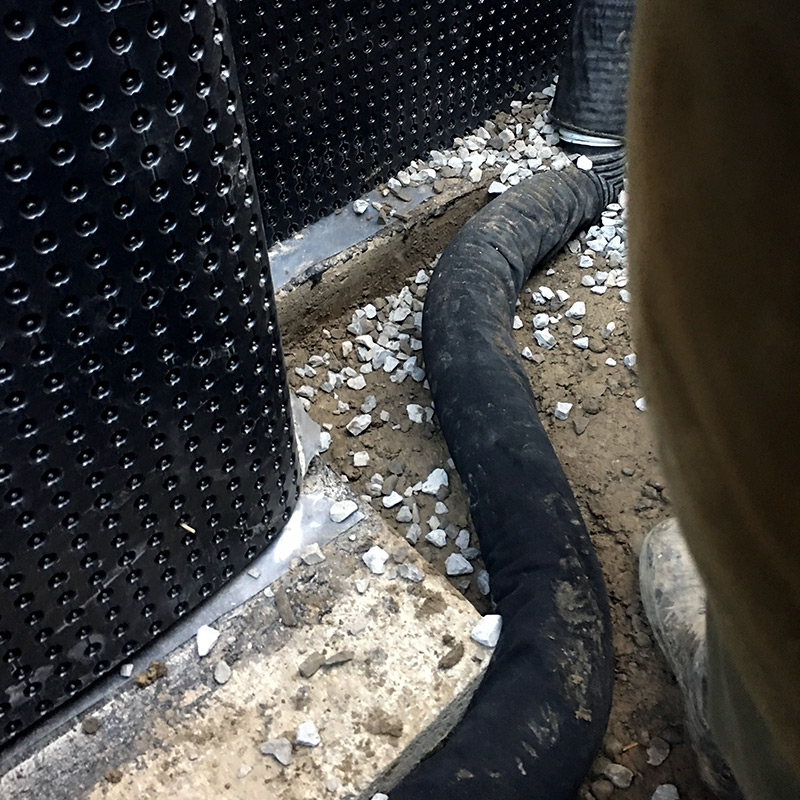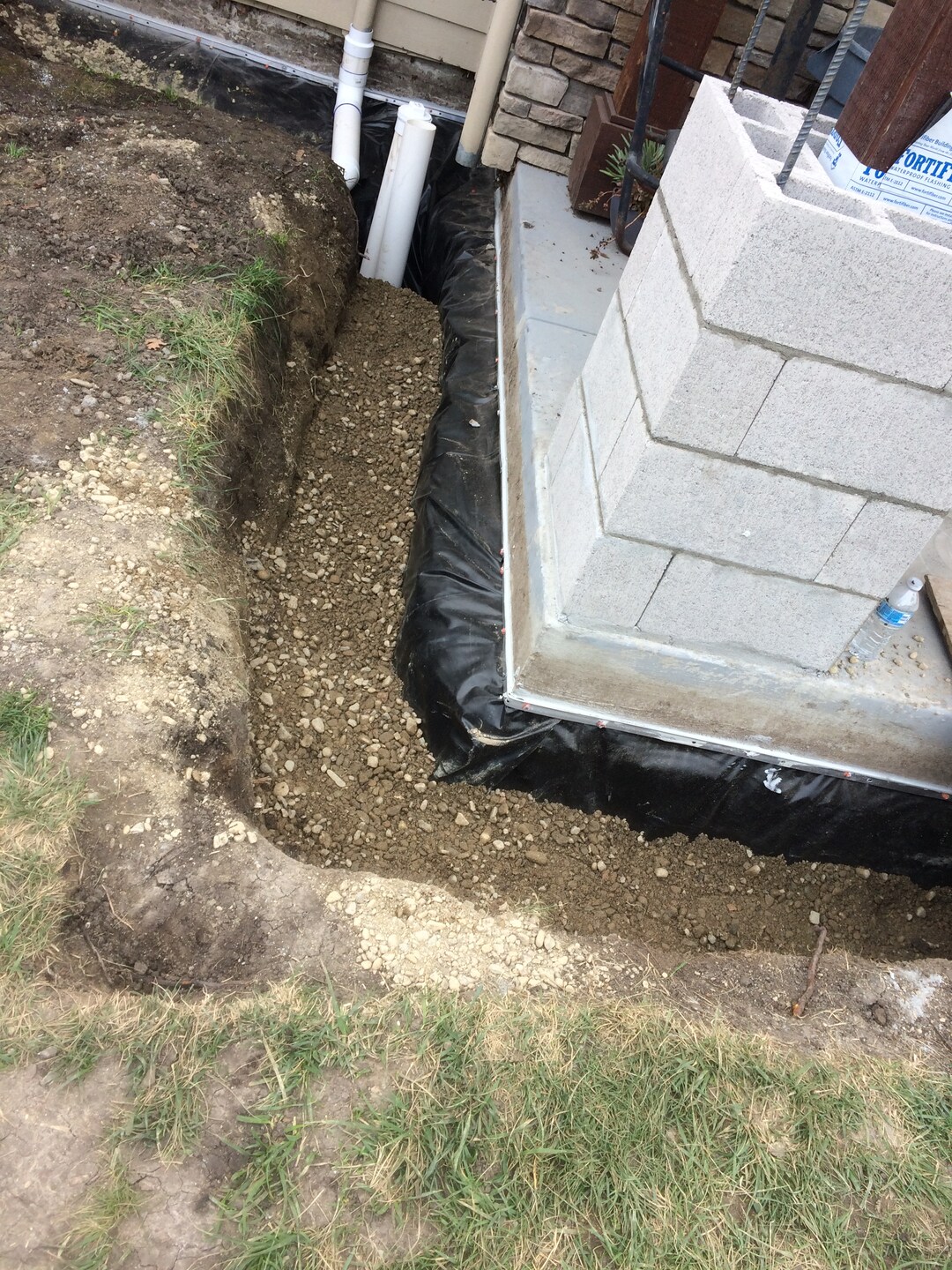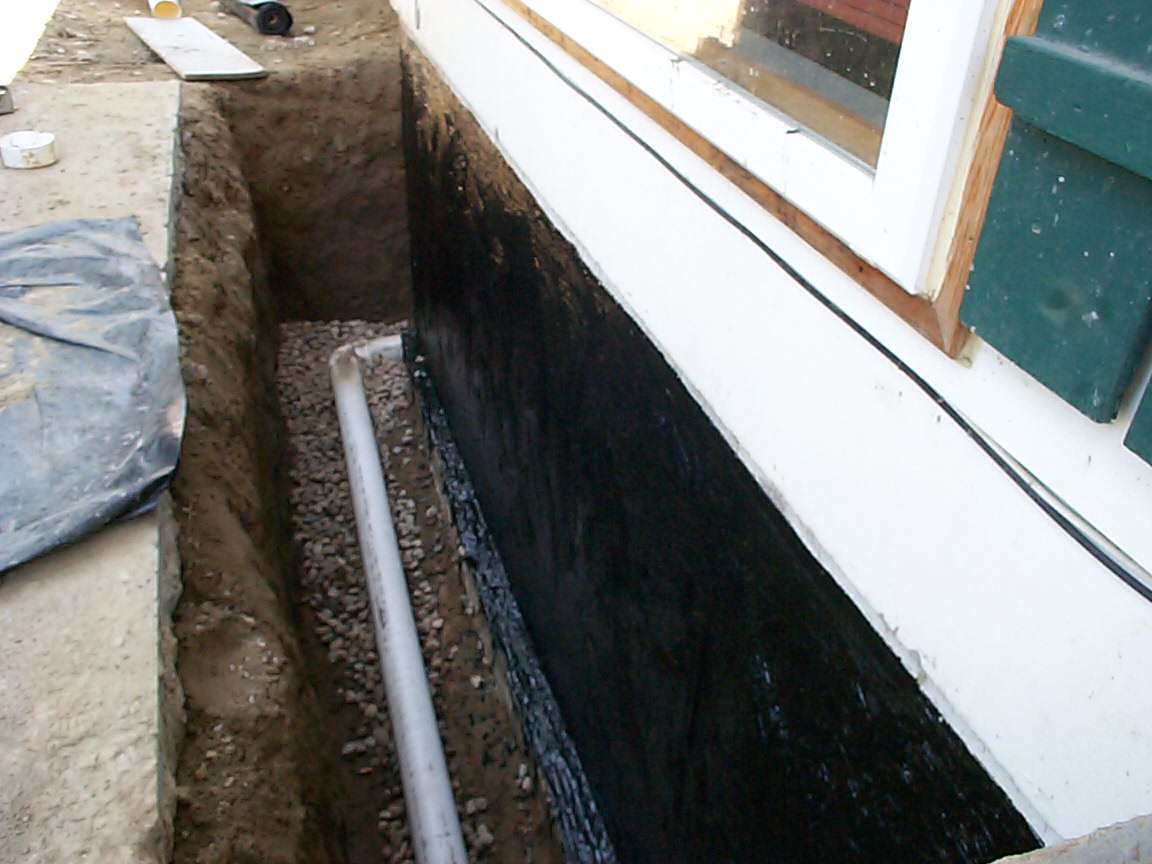Footing Drain Servicesin Auburn Hills MI
Footing Drains to Ensure Solid and Dry Foundations
We Are Locally Owned & Operated For Over 37 Years
Contact Us Today!
We Serve Businesses In And Around The Following Cities:
About Footing Drain Services
A Comprehensive Guide for Footing Drain in Auburn Hills Commercial Properties
Understanding the intricacies of a footing drain is crucial for any commercial property owner in Auburn Hills. This city’s geography and climate make footing drain an essential component of building infrastructure. However, people often underestimate its importance and complexities. Rather than viewing it as just a plumbing feature, a footing drain carries enormous significance for commercial properties. This unique drainage system is fundamental to structural stability and determines the longevity of commercial buildings. This guide dives into the process, benefits, and real-world applications of a footing drain, focusing on its role in the prosperous city of Auburn Hills.
Understanding the Process and Benefits of a Footing Drain
To start with the basics, a footing drain, also referred to as an exterior footing drain or foundation footing drain system, is designed to prevent excess water from accumulating around the foundation of a property. Installed during the building’s construction, it creates an efficient evacuation path for excess water, diverting it away from the building’s foundation.
The benefits emerge from its very design. Incorporating a footing drainage system is paramount to maintaining the structural integrity of the building. Over time, water can weaken the foundation, leading to cracks and, worst-case scenario, structural failure. A well-designed footing drain reduces this risk, ensuring the facility’s safety, value, and longevity.
A house footing drain, while similar in design and function, typically requires less engineering than a commercial footing drain. Given the larger size and often more complex design of commercial properties, a robust footing drain is critical. These benefits are not only theoretical, and D&J Contracting has a proven track record of protecting Auburn Hills commercial properties from water damage through well-constructed footing drains.
Real-world Applications of Footing Drain Systems
Where does the footing drain shine? Take a walk around Auburn Hills, and you’ll see it in action. Whether it’s an office building, a retail complex, or a restaurant, a footing drain is hard at work, preserving the structure’s security and value.
Consider an office complex nestled in Auburn Hills. The building’s basement, which houses essential utilities and storage, could transform into a flooding nightmare during a heavy downpour without an effective footing drains basement system. With a well-installed footing drain, however, the basement remains dry, the building safe, and business operations undisturbed.
The benefits also extend to retail complexes that have underground parking lots. A well-constructed perimeter footing drain can efficiently redirect water, keeping the parking area free from unwanted water logging and ensuring the preservation of goods and the safety of visitors.
Navigating Footing Drain Excavation, Repair, and Replacement
Interestingly, a well-maintained footing drain requires minimal attention in its lifespan. However, occasional footing drain excavation, repair, or replacement may be necessary. This task can seem daunting but D&J Contracting simplifies it with an expert understanding of the local landscape and decades of expertise in Auburn Hills.
The need for footing drain repair may emerge in the unfortunate event of a malfunction, which commonly manifests itself in the form of a damp or leaky basement. Meanwhile, a footing drain replacement might be more about upgrades — incorporating the latest material and techniques to get more value from this essential infrastructure component.
In either case, the intervention of professionals like D&J Contracting ensures proper diagnosis and remedy, guaranteeing that commercial properties continue to reap the benefits of a functioning footing drain. Remember, mishandling can turn the problem from bad to worse. So, it is always advisable to seek professionals’ help if your property encounters any of these issues.
We’ve journeyed through the essentials of a footing drain and its role in the vibrant city of Auburn Hills. This humble-yet-heroic feature safeguards the value and stability of countless commercial properties in the locality. To summarize, a footing drain is a fundamental component of your commercial property. Being a long-term investment, it would be wise to entrust its construction and maintenance to the experts.
As we’ve seen with our real-world examples, D&J Contracting continues to protect and enhance Auburn Hills commercial properties through their commitment to high-quality footing drain work. Whether you’re planning to build, facing issues with your current system, or looking to enhance your existing infrastructure, don’t hesitate to seek professional support. Remember, a sturdy footing drain system is the silent caretaker that ensures your building stands tall and strong, no matter what the weather brings!
Footing Drain Services Gallery


Call Us Today to receive your Free Quote for
Footing Drain in Auburn Hills
Serving: Auburn Hills, Michigan

About Auburn Hills, Michigan
In 1908, automobile pioneer John Dodge bought a farmhouse 3 miles (4.8 km) northeast of Auburn Heights to use as his country retreat. His oldest child, Winifred Dodge, married real estate baron Wesson Seyburn, who built his own country retreat 2.5 miles (4.0 km) north of Auburn Heights. The estate included hunting land, dog kennels, a swimming pool, horse stables, and a 5,000-square-foot (460 m) Colonial Revival house. Pontiac Township purchased the estate in 1976, and adapted the buildings for government use. Today, it is known as the Auburn Hills Civic Center.
The first use of the name “Auburn Hills,” in 1964, was by Oakland Community College. They named their campus (a former Nike missile base) at Featherstone and Squirrel roads for the town and the hilly terrain in the area. Besides Oakland Community College, three other colleges, Oakland University, Baker College, and Western Michigan University Thomas M. Cooley Law School have campuses partially within the city limits.
Auburn Hills began as Pontiac Township, including the village of Auburn, in 1821, at what is today the corner of Auburn and Squirrel roads. Situated on the Clinton River, it was named by Aaron Webster, the first settler, for Auburn, New York. His sawmill and grist mill attracted settlers to Auburn. After the streets were laid out in 1826, Auburn rivaled nearby Pontiac until the 1860s, when it lost its own prosperity. The town was renamed Amy in 1880, and it officially became Auburn Heights in 1919. Pontiac Township bordered the city of Pontiac on two sides. The township attempted to incorporate as Pontiac Heights in 1971, but was denied by state officials. Pontiac Township became a charter township in 1978, to protect itself from further annexation. In 1983, Pontiac Township merged with the village of Auburn Heights to become the City of Auburn Hills. It is not to be confused with the similarly named city of Auburn, Michigan, that exists in Bay County, near Saginaw Bay.
According to the United States Census Bureau, the city has a total area of 16.64 square miles (43.10 km), of which 16.60 square miles (42.99 km) is land and 0.04 square miles (0.10 km) (0.24%) is water.
| Census | Pop. | Note | %± |
|---|---|---|---|
| 1880 | 111 | — | |
| 1990 | 17,076 | — | |
| 2000 | 19,837 | 16.2% | |
| 2010 | 21,412 | 7.9% | |
| 2020 | 24,360 | 13.8% | |
| U.S. Decennial Census | |||
As of the census of 2010, there were 21,412 people, 8,844 households, and 4,923 families living in the city. The population density was 1,289.9 inhabitants per square mile (498.0/km). There were 9,965 housing units at an average density of 600.3 per square mile (231.8/km). The racial makeup of the city was 66.3% White, 18.5% African American, 0.3% Native American, 8.9% Asian, 2.7% from other races, and 3.4% from two or more races. Hispanic or Latino of any race were 7.8% of the population.
There were 8,844 households, of which 27.0% had children under the age of 18 living with them, 38.8% were married couples living together, 12.4% had a female householder with no husband present, 4.5% had a male householder with no wife present, and 44.3% were non-families. 33.5% of all households were made up of individuals, and 7.3% had someone living alone who was 65 years of age or older. The average household size was 2.24 and the average family size was 2.90.
The median age in the city was 31.4 years. 19.4% of residents were under the age of 18; 17.8% were between the ages of 18 and 24; 31.9% were from 25 to 44; 21.6% were from 45 to 64; and 9.4% were 65 years of age or older. The gender makeup of the city was 48.4% female and 51.6% male.
As of the census of 2000, there were 19,837 people, 8,064 households, and 4,604 families living in the city. The population density was 1,194.5 inhabitants per square mile (461.2/km). There were 8,822 housing units at an average density of 531.2 per square mile (205.1/km). The racial makeup of the city was 75.92% White, 13.22% African American, 0.32% Native American, 6.33% Asian, 0.04% Pacific Islander, 1.56% from other races, and 2.61% from two or more races. Hispanic or Latino of any race were 4.50% of the population.
There were 8,064 households, out of which 26.7% had children under the age of 18 living with them; 43.0% were married couples living together; 10.5% had a female householder with no husband present and 42.9% were non-families. 33.1% of all households were made up of individuals, and 6.0% had someone living alone who was 65 years of age or older. The average household size was 2.25 and the average family size was 2.92.
The age distribution is 20.4% under the age of 18, 15.9% from 18 to 24, 38.1% from 25 to 44, 18.2% from 45 to 64, and 7.3% who were 65 years of age or older. The median age was 31 years. For every 100 females, there were 98.3 males. For every 100 females age 18 and over, there were 97.5 males.
The median income for a household in the city was $51,376, and the median income for a family was $60,849. Males had a median income of $45,686 versus $34,015 for females. The per capita income for the city was $25,529. About 3.9% of families and 6.3% of the population were below the poverty line, including 6.4% of those under age 18 and 4.4% of those age 66 or over.
School districts serving sections of Auburn Hills include Avondale School District, Pontiac School District, and Rochester Community Schools.
The Avondale School District operates two elementary schools in the city limits: R. Grant Graham Elementary School and Auburn Elementary School. Portions of Auburn Hills in ASD are zoned to these schools. All ASD residents are zoned to Avondale Middle School in Rochester Hills and Avondale High School in Auburn Hills. Other ASD facilities in Auburn Hills include the district administrative offices and Avondale Montessori. A Pontiac school district school, Will Rogers Elementary School, is located in northeastern Auburn Hills.
Private schools in Auburn Hills include:
- Auburn Hills Christian School
- Oakland Christian School
Private schools near Auburn Hills:
- Notre Dame Preparatory/Marist Academy, Pontiac
- Holy Family Regional School (HFRS) – Consists of a grade PK-3 North Campus in Rochester and a 4-8 South Campus in Rochester Hills. Two churches in Auburn Hills designate HFRS as the parish school: St. John Fisher Chapel and Sacred Heart of the Hills. The first two sponsored the school from the beginning and the other three joined later, with Sacred Heart being the final one.
The main campus of Oakland University sits within Auburn Hills. Oakland Community College, Baker College, and Western Michigan University Thomas M. Cooley Law School are also situated in Auburn Hills.
Call Us Today to receive your Free Quote for
Footing Drain in Auburn Hills
Related Services in Auburn Hills, Michigan
We Serve Businesses In The Following Zip Codes:
48007, 48015, 48021, 48026, 48035, 48036, 48038, 48042, 48043, 48044, 48045, 48046, 48047, 48048, 48050, 48051, 48066, 48071, 48080, 48081, 48082, 48083, 48084, 48085, 48088, 48089, 48090, 48091, 48092, 48093, 48098, 48099, 48225, 48230, 48236, 48310, 48311, 48312, 48313, 48314, 48315, 48316, 48317, 48318, 48397